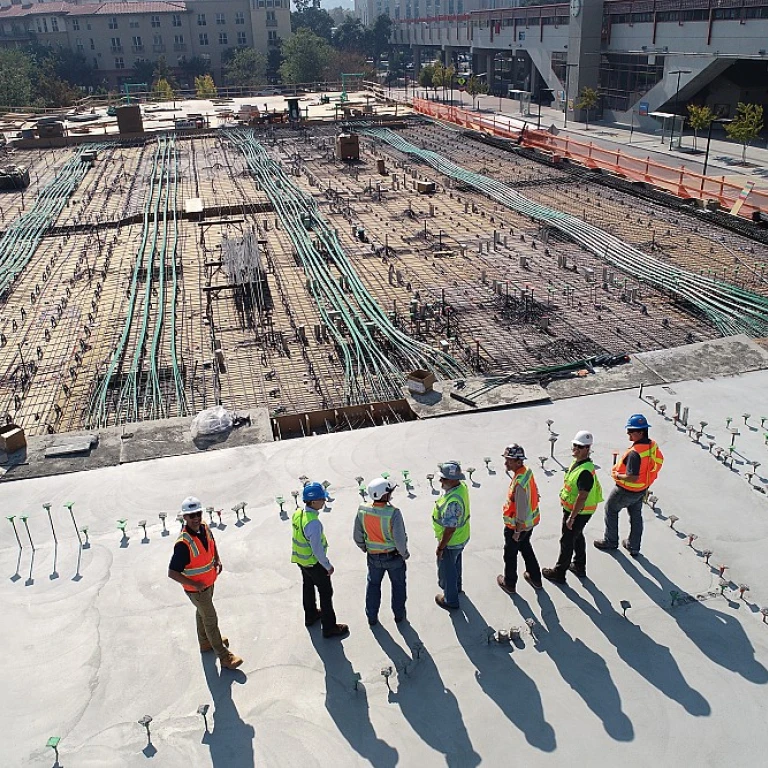
Understanding Appreciative Culture
Nurturing an Atmosphere of Appreciation
An appreciative culture within a company is more than just sporadic "thank you." It represents a systemic approach to recognizing and valuing every employee's hard work and contribution. As organizations aim to create a more positive and enriching work environment, integrating appreciation into the workplace culture becomes paramount.
The significance of appreciation in the workplace cannot be overstated. Employees who feel valued and recognized are likely to be more engaged and motivated. This effect cascades down to improve overall productivity and foster a sense of belonging among team members. It encourages a positive feedback loop where appreciation fuels motivation, which in turn enhances individual performance and, ultimately, the organization's success.
An organizational culture that prioritizes appreciation not only elevates the employee experience but also strengthens the bonds between team members. This can be achieved through formal recognition programs and spontaneous moments of peer recognition. When these efforts are properly implemented, they cultivate a culture where employees feel appreciated for their efforts and encouraged to continue contributing positively to the company.
Leaders play a decisive role in embedding appreciation within the company culture. Not just through policy planning, but by modeling appreciation in their daily interactions. This fosters a ripple effect throughout the organization, influencing how employees appreciate each other, which contributes significantly to building a thriving work culture.
Ultimately, understanding appreciative culture involves leveraging recognition as a tool for enhancing employee well-being and engagement. It requires thoughtful integration into organizational practices, backed by leadership commitment, and supported by effective recognition programs that emphasize gratitude and celebration of achievements. This dynamic approach to employee recognition sets the foundation for a vibrant and productive workplace.
The Role of Leadership in Fostering Appreciation
Fostering a Positive Work Culture with Strong Leadership
Leadership plays a crucial role in nurturing an appreciative culture within any organization. Effective leaders understand that recognition and appreciation are not just about praise; it's about creating an environment where every employee feels valued and motivated. A company culture driven by appreciation and recognition is pivotal for employee engagement and satisfaction.
Leadership commitment to appreciation work sets the tone for the entire workplace. By genuinely showing gratitude for hard work, leaders can influence how team members engage with each other and the organization. This can significantly impact employee experience, ensuring that employees feel appreciated and recognized for their contributions.
In addition to direct recognition, leaders can facilitate peer recognition programs. Implementing such programs encourages a culture of mutual appreciation where peers acknowledge each other's efforts and achievements, further solidifying a positive workplace culture. Employees who feel recognized by their peers are likely to have higher morale and dedication.
Leaders also need to invest in building programs that sustain appreciation. It involves creating opportunities for team members to express gratitude and recognize extraordinary efforts. Through formal or informal initiatives, leaders can ensure that the work culture is rooted in recognition and appreciation.
Moreover, leadership should align their actions with the organization's values of gratitude and recognition. Consistency in values demonstrates authentic leadership and helps cultivate a culture of appreciation that permeates throughout the workplace. This alignment fosters an environment where people feel empowered and motivated to contribute to the organization's success.
Appreciative Culture and Employee Well-being
Well-being and the Power of Recognition
Appreciation and recognition play a significant role in enhancing employee well-being within a company culture. When employees feel genuinely valued for their hard work, their sense of belonging and morale is uplifted. A positive work environment can be fostered by building an appreciative culture, which not only praises employees but also integrates appreciation as a standard practice in the workplace.
Incorporating regular and genuine employee recognition into organizational processes helps employees feel appreciated and see the value of their contributions. This can range from simple verbal acknowledgment by team members to formal recognition programs. When peers routinely appreciate each other's efforts, a culture of mutual respect and appreciation develops, strengthening peer relationships and team dynamics.
An organization that invests in appreciation workplace initiatives often experiences enhanced employee experience and overall company performance. Feelings of gratitude and appreciation at work are linked to lower stress levels, increased job satisfaction, and higher levels of employee engagement. Employees who perceive genuine appreciation from their leaders are more likely to connect with the organization's goals and commit themselves to achieving them.
Research in employee recognition has shown that supportive leadership can significantly improve workplace culture. Leaders must lead by example by expressing appreciation regularly. By doing so, they help cultivate a work environment where recognition is a norm rather than an exception. This, in turn, contributes to sustaining a positive culture, where both employees and the organization thrive.
Instituting an appreciative mindset within the company must go beyond verbal acknowledgments. It involves a strategic approach to embed recognition into the very fabric of organizational culture, possibly informed by the insights detailed in a strategic framework. When effectively implemented, these efforts result in employees feeling valued, thus improving work culture and overall organizational success.
Implementing Appreciative Practices
Strategies for Implementing Thoughtful Recognition Practices
In today's dynamic workplace, cultivating a culture of appreciation requires deliberate strategies. When embedding appreciation into the culture, companies need to focus on structured recognition programs that go beyond mere acknowledgment. Involving employees in crafting these programs ensures they are tailored to the organization's unique needs and aspirations.
To make employees feel genuinely valued, implement both formal and informal recognition. Formal programs can be scheduled and targeted, highlighting achievements during meetings or via company newsletters. Meanwhile, informal recognition, like spontaneous "thank yous" or peer acknowledgments, should be part of daily interactions.
Leveraging Technology for Recognition
Incorporate technology for recognition programs to simplify the process. Platforms that facilitate peer recognition enable team members to express gratitude and appreciation conveniently. Such tools can transform the work environment, encouraging transparency and fostering a positive culture appreciation., where every employee's hard work is acknowledged.
Building a Framework of Consistency
Consistency is pivotal in establishing sustainable appreciative practices. Leaders and managers must be trained to maintain regularity in appreciation efforts, ensuring everyone feels appropriately recognized for their contributions. Routine peer reviews or check-ins can help reinforce this practice, building a structured yet personal approach.
Incorporating these strategies will not only enhance the workplace culture but also elevate the overall employee experience, making the organization a more engaging and rewarding place for people to work. It highlights the essential connection between appreciation, employee engagement, and overall company success.
Measuring the Impact of an Appreciative Culture
Assessing the Value of Cultural Appreciation Initiatives
In an organization focused on fostering an appreciative culture, it's vital to measure the impact of initiatives aimed at amplifying appreciation and recognition efforts. This evaluation not only highlights the program's efficacy but also underlines its contributions to enhancing the work culture. For leadership, understanding these metrics can guide future strategies.Metrics that Matter
Implementing an effective recognition program requires careful monitoring of several key performance indicators:- Employee Engagement: High employee engagement often correlates with strong appreciation practices. Surveys and feedback forms can help assess how employees feel about the current work environment and the recognition they receive.
- Turnover Rates: An appreciative workplace culture generally results in lower turnover rates, as employees feel valued and recognized for their hard work, reducing the inclination to seek employment elsewhere.
- Productivity Levels: Recognizing and rewarding hard work encourages higher productivity levels within teams as team members feel motivated to contribute to the organization's success.
- Peer Recognition: Measuring peer recognition, where team members acknowledge each other's contributions, strengthens interpersonal relationships and creates a more cohesive team.
Feedback Channels
Gathering feedback from employees is a crucial part of measuring an appreciation work culture. This can be achieved through:- Regular Surveys: Conducting surveys where employees can express how the appreciation efforts affect their job satisfaction and motivation.
- Focus Groups: Facilitating open discussions in focus groups allows for deeper insights into specific areas needing improvement.
- Suggestion Boxes: Providing anonymous suggestion boxes allows employees to voice their opinions on the recognition program without fear of repercussions.
Challenges and Solutions in Building an Appreciative Culture
Overcoming Barriers to Building an Appreciative Culture
Creating an appreciative culture within an organization is not without its challenges. While the benefits of fostering appreciation and recognition are clear, implementing these practices can be met with resistance and obstacles. Understanding these challenges is the first step in overcoming them and ensuring that employees feel valued and engaged.
Resistance to Change
One of the most significant hurdles is resistance to change. Employees and leaders alike may be accustomed to a certain way of doing things, making it difficult to introduce new appreciation practices. To address this, it’s crucial to communicate the benefits of an appreciative culture clearly. Highlight how recognition programs can enhance employee engagement and improve the overall work environment. Leaders should model the behavior they wish to see, demonstrating the positive impact of appreciation in the workplace.
Inconsistent Implementation
Another challenge is the inconsistent implementation of appreciation practices. Without a structured approach, recognition efforts can become sporadic and lose their effectiveness. Organizations should establish clear guidelines and programs to ensure that appreciation is a regular part of the company culture. This can include setting up peer recognition systems and formal employee recognition programs to ensure that all team members feel appreciated for their hard work.
Ensuring Genuine Appreciation
It’s essential that appreciation is genuine and not perceived as a mere formality. Employees can quickly sense insincerity, which can undermine the entire effort. Training leaders and team members on how to express genuine gratitude and recognition can help build a culture of appreciation that feels authentic and meaningful. Encouraging peer recognition can also help, as employees often value acknowledgment from their colleagues.
Measuring Success
Finally, measuring the impact of an appreciative culture can be challenging. Organizations need to establish metrics to assess the effectiveness of their recognition programs. This can include employee surveys, feedback sessions, and tracking key performance indicators related to employee satisfaction and retention. By regularly evaluating these metrics, companies can adjust their strategies to better meet the needs of their employees and enhance the overall employee experience.
Building an appreciative culture is an ongoing process that requires commitment and effort from all levels of the organization. By addressing these challenges head-on, companies can create a positive work culture where employees feel valued and motivated to contribute their best.












